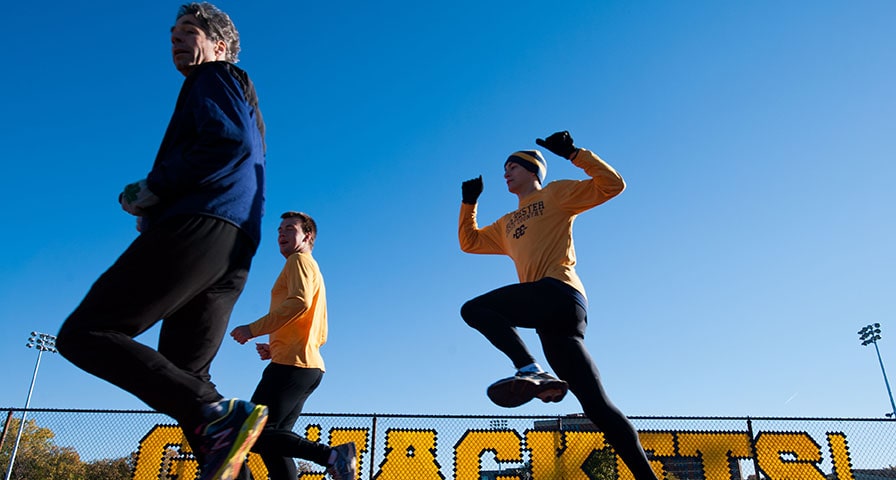Originally published Feb. 6, 2022 in Lancaster Online.
By Jeremy Schilling, Garden Spot High School
The COVID-19 pandemic is having a negative effect on our mental health. But what about the effect it’s having on our physical health? And what about the relationship between the two?
Physical activity is extremely beneficial to our mental health and well-being. Kids who get more exercise tend to have better brain function and are more focused during school. Studies show that adults who get more physical activity are significantly happier and harder-working, and they even tend to be more confident.
While the physical benefits of regular workouts are numerous and widely known, it’s interesting to note the many positive social and emotional benefits, as well.
I speak from personal experience as a competitive high school athlete when I say that I’ve become a more confident, driven, goal-oriented person after committing to regular workouts.
I stepped out of my comfort zone in more ways than one: I met new people, I talked with people from different walks of life and I’ve made many good friends in the process.
Being physically fit helps kids and adults in similar ways. According to the nonprofit website HelpGuide.org, regular exercise can help with depression, attention deficit hyperactivity disorder and anxiety. It can also help improve memory by creating new synapses that “mediate long-term learning and memory.”
Regular exercise helps relieve stress in kids and adults, and we know that stress is a driving factor in many health risks. Stress can literally kill us.
Physical fitness also helps with many illnesses and diseases. Regular exercise lowers the risk of heart disease and contributes to lowered blood sugar. It also helps with weight loss, which is a big health issue in American society today. Harvard Medical School published an article in October reporting that, of the 15 million patients it surveyed, 39% of them gained weight during the pandemic.
Regular exercise can also help people quit smoking. According to smokefree.gov, a government-sponsored campaign to help people kick the habit, exercise is a major part in helping people to quit smoking for good.
Aerobic exercise, specifically cardio-based training, helps to reduce the cravings of wanting to smoke, and it also decreases appetite, which reduces the weight gain that some people experience when trying to give up cigarettes.
But which demographic benefits the most from exercise? Kids.
Regular exercise is crucial for America’s children: it helps curb the l kelihood of Type 2 diabetes, obesity, high blood pressure and high cholesterol. Kids who work out also tend to get better grades in school, according to the Centers for Disease Control and Prevention.
kelihood of Type 2 diabetes, obesity, high blood pressure and high cholesterol. Kids who work out also tend to get better grades in school, according to the Centers for Disease Control and Prevention.
I’ve seen firsthand the benefits of making time to care for myself physically. I’ve learned to manage my time better. I’ve gained some confidence. I’m happier. I’m more outgoing. My focus has improved in the classroom and I have a clearer picture of what I want for my future.
The effects of physical activity in my life are everlasting, and I would strongly encourage everyone to add some physical activity to their daily routine.
Jeremy Schilling is in the 12th grade at Garden Spot High School.
Boost Student Wellness with the IHT ZONE heart rate monitor:
[contact-form-7 id=”3054″ title=”How’d you find us?”]


